10 Best Ingredients For Oily Acne Prone Skin to Know
In this article, learn how to carefully procure and incorporate into your skincare regimen some of the best ingredients for oily acne prone skin. Oily, acne-prone skin can present a unique set of challenges, from excess sebum production, to the unwelcome presence of acne-causing bacteria. However, to target these concerns effectively, it is paramount to achieve a harmonious balance in your skincare routine to control oil whilst maintaining a hydrated skin barrier.
Take care that your skincare procurement decisions do not hinge solely on surface-level information. They should be grounded in a robust scientific understanding of the factors contributing to excess sebum production and acne breakouts. Learn how the best ingredients for oily acne prone skin address these issues within the skin barrier. You will then be able to carefully chose a balance of cleansing, exfoliating, and hydrating ingredients.
We will now explore the needs of oily, acne-prone skin types. Then we will investigate the relevant cleansing, exfoliating, and hydrating ingredients you should consider in your skincare routine. Learn why they are some of the best ingredients for oily acne prone skin.
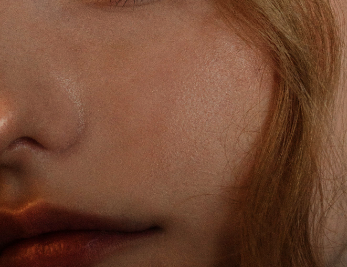
Section I: Understanding Oily, Acne Prone Skin
In this section, we will delve into the essential strategies for maintaining a healthy skin barrier through a carefully balanced skincare regimen.
By incorporating the right combination of cleansing, exfoliating, and hydrating ingredients, we will uncover effective solutions to address the concerns of oily, acne prone skin types and help control oil.
Challenges of Oily, Acne Prone Skin
Sebum production
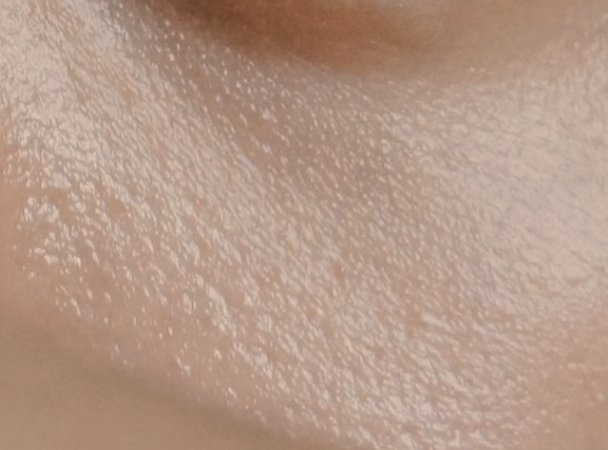
Oily skin reflects an overproduction of sebum produced by sebaceous glands. Sebaceous glands are more active in individuals with oily skin.
While sebum serves the important function of lubricating and waterproofing the skin, in excess it can lead to issues.
Pore Size
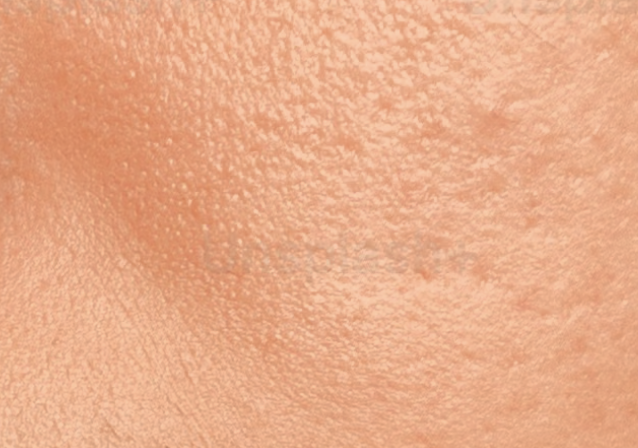
When sebaceous glands produce excess sebum, the oil can become trapped within hair follicles or the pore, leading to a blockage. This process involves an overabundance of lipids, dead skin cells and mechanical forces acting on the pore. The lipids may oxidise, making the mixture of sebum and dead skin cells thicker. This thereby exerts pressure of the walls of the hair follicle, thus stretching and dilating the pore, making it appear enlarged.
Acne Formation

Along with excess sebum and accumulated dead skin cells, acne such as whiteheads, blackheads and pimples can form as a result of bacteria such as P. acnes becoming trapped in the hair follicles or pores. This creates an ideal environment for bacteria to proliferate and metabolise the lipids in sebum for growth. Hence, this triggers an inflammatory response from the immune system and acne lesions.
Inflammation
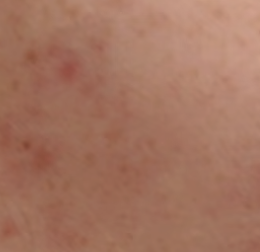
Excess sebum production can contribute to inflammation in the skin. This can further aggravate existing acne lesions and increase the likelihood of new breakouts. Inflammation can also lead to redness and swelling.
Importance of a balanced skin barrier in sebum regulation
The skin barrier acts as a critical defence for our skin. It is primarily comprised of lipids, ceramides, cholesterol, and fatty acids. Its primary function is to shield against external aggressors whilst retaining moisture within the skin.
To avoid disrupting the skin’s moisture balance, limit the use of ingredients that solely target pore unclogging or antimicrobial action. Excessive use can increase transepidermal water loss (TEWL), leading to barrier dysfunction. Instead, focus on including ingredients in your routine that balance lipids and moisturising factors within the skin barrier. These will help to regulate signalling pathways and effectively control sebum production.
How adequate moisture regulates sebaceous glands
When the skin barrier detects adequate moisture levels, lipids and cytokines signal to sebaceous glands via receptors. This prompts intracellular pathways, inhibiting adenylate cyclase activity and lowering cyclic AMP (cAMP) levels. Consequently, sebum production decreases as lipid synthesis and secretion diminish within sebaceous glands, aiding in oil management. Conversely, an impaired skin barrier with imbalanced lipids disrupts this equilibrium, leading to dysregulated sebum production and worsening acne.
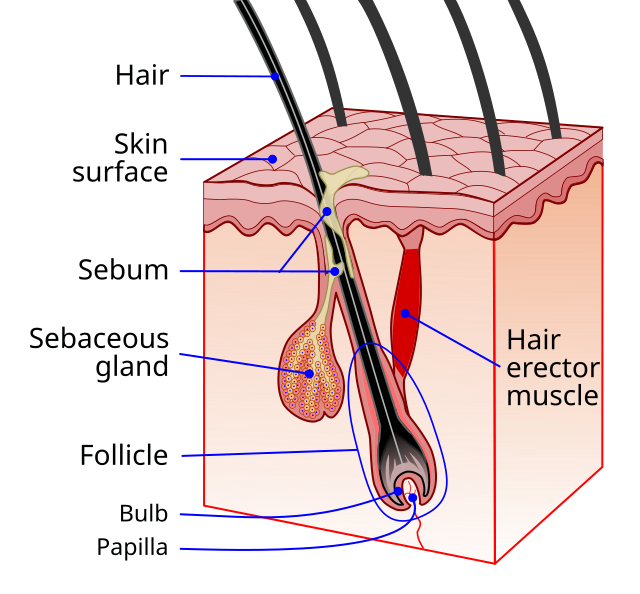
How to Craft a Routine to Include the Best Ingredients for Oily Acne Prone Skin
Craft an effective skincare regimen for oily skin by essentially including cleansing, exfoliation, and moisturising steps (and SPF daily!).
Cleansing and Exfoliating Oily Acne Prone Skin
Cleansing and exfoliation play crucial roles in removing excess oil and dead skin cells, which can otherwise accumulate and lead to clogged pores and acne.
Buffing away these impurities enhances the skin’s clarity. Moreover, it also paves the way for better absorption of moisture and other ingredients.
Moisturisation for Oily Acne Prone Skin
Adequate moisturisation is equally vital in oily skin types. It helps draw moisture to the epidermis without clogging pores (with the right ingredients discussed later) to regulate sebum production and control oil. This replenishment of moisture is also pivotal for maintaining the skin barrier’s integrity. Effectively, the skin is able to fend off external aggressors such as pollutants and irritants that cause also cause acne.
Sunscreen – one of the best ingredients for oily acne prone skin
Use a broad-spectrum SPF every morning to protect the skin from UV damage. UV damage can exacerbate inflammation and lead to post-inflammatory hyperpigmentation—a common concern in acne-prone individuals. SPF shields the skin from environmental stressors, reducing the risk of further breakouts and uneven skin tone.

Section II: Best Ingredients for Oily Acne Prone Skin – Exfoliation
Board-certified dermatologists advise exfoliation is the cornerstone of effective skincare for oily, acne-prone skin. This is due to its ability to unclog pores, regulate oil production, and enhance the overall clarity of the complexion.
Exfoliation is a transformative process for the skin by shedding expired cells. Exfoliating serves as a key player in preventing clogged pores. This is achieved through removing the impediments that often trap debris and sebum within hair follicles. Additionally, the chemical exfoliation process stimulates cell turnover, encouraging the skin to replenish itself with new, youthful cells.
Consider the following active ingredients when selecting your cleansers or exfoliants.
Salicylic Acid: Pore Purifier for Oily Acne Prone Skin
What is salicylic acid?
Salicylic acid is a potent beta hydroxy acid (BHA). It has a reputation as one of the best ingredients for oily acne prone skin. Its small molecular structure allows it to penetrate deeply into the pores. Here, it performs meticulous unclogging within follicles through chemical exfoliation. It helps to prevent the formation of new acne lesions by keeping pores clear and reducing inflammation.

Exfoliation via keratolysis to unclog pores
Salicylic acid is a lipophilic (oil-loving) compound with a small molecular structure. These properties allow it to deeply penetrate the lipid-rich skin layers. It dissolves in sebum and penetrates the follicular duct, exerting its exfoliating effects by disrupting corneocyte cohesion.
Corneocyte cohesion refers to the binding together of dead skin cells (corneocytes) in the stratum corneum, the outermost layer of the epidermis. In oily, acne-prone skin, excessive corneocyte cohesion can lead to the formation of comedones (clogged pores), contributing to acne.
Salicylic acid facilitates keratolysis by dissolving keratin, a protein that causes the skin cells to stick together. It penetrates into the pores and acts as a keratolytic agent. This means it breaks down the bonds between corneocytes, promoting their shedding. This helps prevent the accumulation of dead skin cells within the pores and avoid the formation of acne lesions.
Furthermore, salicylic acid indirectly boosts skin moisture levels. It enhances the absorption of hydrating ingredients into unclogged pores, supporting the skin’s natural moisturising mechanisms.
Anti-inflammatory effects
Its anti-inflammatory properties also quell redness and swelling that comes with acne. When applied topically, salicylic acid readily penetrates the skin and enters the pores, where it exerts its anti-inflammatory effects. Within the pore, it regulates the overactive immune response by inhibiting the activity of enzymes called cyclooxygenases (COX). These enzymes are responsible for producing inflammatory prostaglandins. By hindering this process, salicylic acid reduces the production of inflammatory mediators, effectively dampening the redness and swelling associated with acne.
In essence, salicylic acid is the diligent custodian of clear pores and a smoother, more refined complexion. It can also have brightening effects in so far as reducing the risk of post-inflammatory hyperpigmentation.
Concentration and Usage
In over-the-counter skincare products, salicylic acid concentrations typically range from 0.5% to 2% (as approved by the FDA). For individuals with sensitive or dry skin, start with a lower concentration (0.5% to 1%) to minimise risk of irritation. Some people may tolerate higher concentrations (1% to 2%). Though, salicylic acid is particularly known to be drying and/or irritating to some at higher concentrations at a pH of 3 to 4.
Introduce salicylic acid gradually into your skincare routine. Use sunscreen daily, as salicylic acid can increase skin sensitivity to UV radiation.
Murad Clarifying Cleanser with 1.5% Salicylic Acid
I recommend the Murad Clarifying Cleanser (200ml) for normal to ily skin that I’ve personally used it for many months. Its unique dual-action formula contains two different forms of salicylic acid to effectively manage breakouts over time.
- The free-form salicylic acid starts working soon after application by exfoliating the outer layer of the skin. By dissolving the bonds between dead skin cells, it helps to unclog pores.
- The encapsulated form is designed to release the active ingredient gradually and penetrates deeper into the pore. Here, it continues to exfoliate and clear out impurities over an extended period, even after rinsing off the cleanser.
AHAs: Surface Refiners as Best Ingredients for Oily Acne Prone Skin
Alpha hydroxy acids (AHAs) are one of the best ingredients for oily, acne-prone skin due to their exfoliating properties. They are often found in exfoliating toners, serums, and creams.
AHAs effectively work to remove dead skin cells from the surface of the skin. Meanwhile, BHAs like salicylic acid exfoliate deeper in the skin to unclog pores. AHAs help to prevent the buildup of debris and excess oil on the skin’s surface, which are common contributors to acne breakouts. Therefore, AHAs primarily target the outermost layer of the skin, known as the stratum corneum.
AHA Benefits
- Help to loosen and remove dead skin cells, including unevenly textured skin cells. This promotes the emergence of smoother, more radiant skin underneath;
- Stimulate collagen production, aiding in the gradual fading of acne scars and improving overall skin texture;
- Facilitate greater absorption of subsequent skincare products like serums and moisturisers to penetrate more deeply and work more effectively;
- Help regulate sebum production by promoting a more balanced skin environment, discouraging excess oil and acne.
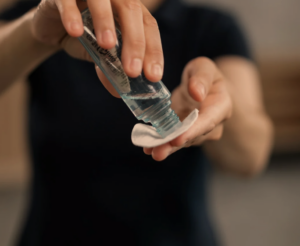
How AHAs work
AHAs exfoliate the outer layer of the skin (stratum corneum). They primarily penetrate the intercellular spaces between corneocytes (dead skin cells) within the stratum corneum.
Once absorbed, AHAs weaken the bonds between corneocytes by disrupting corneodesmosomes, the structures that hold dead skin cells together. This process, known as desquamation, results in the shedding of dead skin cells, revealing smoother, brighter skin underneath. Additionally, AHAs can stimulate collagen production in the skin, leading to improved skin texture and firmness over time.
Lactic acid and glycolic acid are two common types of AHAs frequently used in skincare formulations.
Glycolic Acid
Glycolic acid as an AHA has a smaller molecular size compared to lactic acid. Due to its smaller size, glycolic acid can penetrate more deeply into the skin more intensely. This effectively accelerates the exfoliation process.
Additionally, glycolic acid stimulates cell turnover in the deeper layers of the epidermis. Over time, this results in smoother, brighter, and more rejuvenated skin over time.

Lactic Acid
Meanwhile, lactic acid as an AHA has a larger molecular size compared to glycolic acid. Therefore, its size limits its penetration into the skin. These properties mean lactic acid exfoliates the skin more gently compared to glycolic acid. This makes it suitable for individuals with sensitive skin or those new to AHAs.
Humectant properties
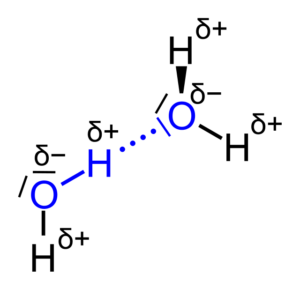
Both glycolic acid and lactic acid possess natural humectant properties. Their hydroxyl (-OH) groups make them able to attract and retain moisture in the skin. This balance is crucial for oily, acne-prone skin types. It helps maintain optimal hydration levels without exacerbating excess oil production. However, the larger molecular size of lactic acid allows it to form more stable hydrogen bonds with water molecules more readily.
Lactic acid has an additional (-OH) group compared to glycolic acid. This further aids in moisture retention in the skin for slightly greater humectant properties. This hydrating effect helps to counteract any dryness or irritation caused by exfoliation. As a result, the skin feels nourished and hydrated after use.
Some individuals may find that AHAs alone are sufficient for their skincare needs, while others may benefit from also incorporating BHAs for their deeper pore-unclogging ability into their routine for optimal results.

Note on AHA Concentration and UV Sensitivity
For sensitive skin, exercise caution when using AHAs like glycolic acid and lactic acid. Start with lower concentrations (around 5% for glycolic acid and 5-10% for lactic acid) to minimise the risk of irritation. Gradually increase the strength as tolerance develops. Begin with a once-a-week application and observe how your skin respond. Only then increase the frequency to every other day or as directed by a dermatologist.
Always use a broad-spectrum sunscreen during the day, as AHAs can increase skin sensitivity to UV radiation. Be mindful of any signs of irritation, such as redness, burning, or excessive dryness, and discontinue use if they persist. It is recommended to conduct a patch test first to ensure compatibility with sensitive skin.
Additionally, do not combine AHAs with ascorbic acid (Vitamin C) or retinoic acid (or a retinol) to avoid excess dryness and/or irritation.
Mandelic Acid (for sensitive skin)
Gentle exfoliating for sensitive skin
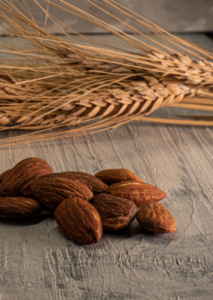
Let’s explore options for individuals with oily, acne-prone skin who also have sensitivity concerns regarding AHAs. Opt for mandelic acid (derived from almonds) as a good alternative to traditional exfoliating ingredients. Compared to its counterparts such as lactic acid, mandelic acid has a larger molecular size. Alongside a slower rate of penetration, this makes it exceptionally gentle on the skin. Despite this gentleness, mandelic acid is effective at promoting cell turnover, unclogging pores, and improving overall skin texture. Though, it can take at least 6-8 weeks to see results. These unique attributes renders mandelic acid suitable for oily, sensitive skin to minimise risk of irritation whilst delivering effective exfoliation.
Mandelic acid is also lipophilic nature (has an affinity for oil). This property allows it to effectively penetrate through the skin’s natural oils, making it particularly well-suited for oily skin types. By targeting excess oil production and sebum buildup, mandelic acid helps to unclog pores and prevent acne breakouts whilst maintaining the integrity of the skin barrier.
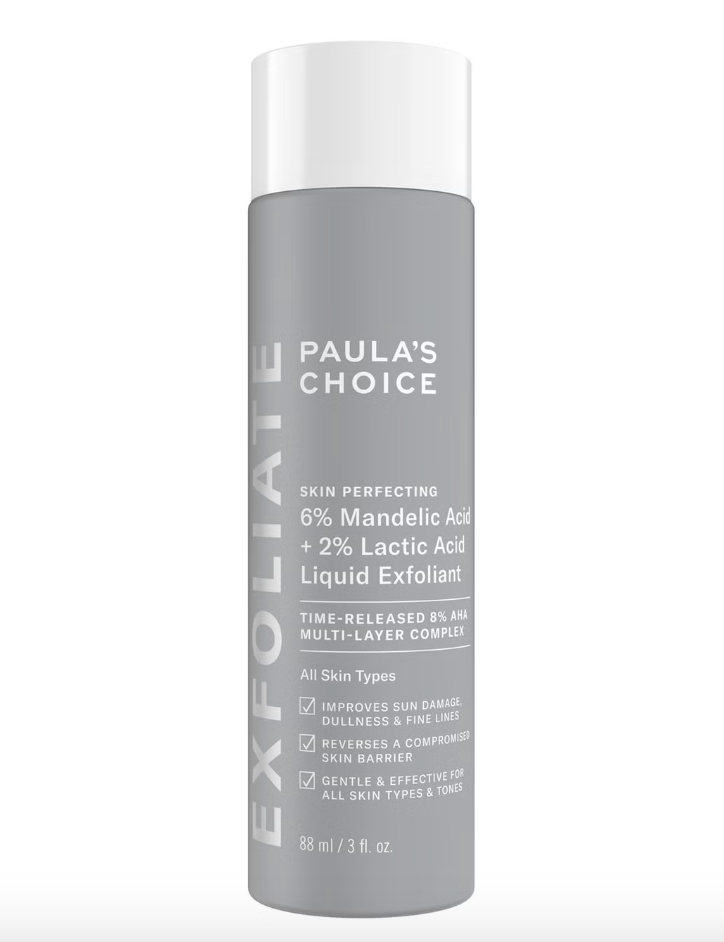
Anti-bacterial properties
Moreover, mandelic acid exhibits antibacterial properties, albeit to a lesser extent than benzoyl peroxide. Therefore, it is not as potent for severe acne cases. However, its antibacterial action still contributes to reducing acne breakouts and improving skin clarity for sensitive skin, while benzoyl peroxide can be too harsh. Mandelic acid works by disrupting the cell membranes of acne-causing bacteria, leading to their destruction.
Paula’s Choice Mandelic Acid 10% + Lactic Acid 5% Exfoliant is a gentle chemical exfoliant ideal for oily, acne-prone skin. It combines mandelic acid, which exfoliates and has antibacterial properties, with lactic acid, known for its hydrating and smoothing effects. This blend helps clear clogged pores, reduce breakouts, and improve skin texture without causing irritation or dryness.

Section III: Best Ingredients for Oily Acne Prone Skin – Anti-Acne
Oily skin is a common precursor to acne breakouts. Despite the prevalence of acne, effective treatments tailored to oily skin types can help manage and alleviate symptoms for a clearer complexion.
Search for the following skincare ingredients for their ability to combat acne and acne-causing bacteria.
Benzoyl Peroxide
Antimicrobial ingredient for oily acne prone skin
Benzoyl peroxide is a potent acne-fighting ingredient. It decomposes into benzoic acid and oxygen upon application to the skin. The oxygen released creates an oxygen-rich environment within the hair follicle. This makes it inhospitable to the acne-causing bacteria Propionibacterium acnes (P. acnes). This effectively kills the bacteria by disrupting its anaerobic growth conditions. Benzoyl peroxide is also highly effective in treating inflammatory acne lesions, including papules, pustules, and nodules.
Benzoyl peroxide is a much more potent anti-bacterial ingredient that salicylic acid.
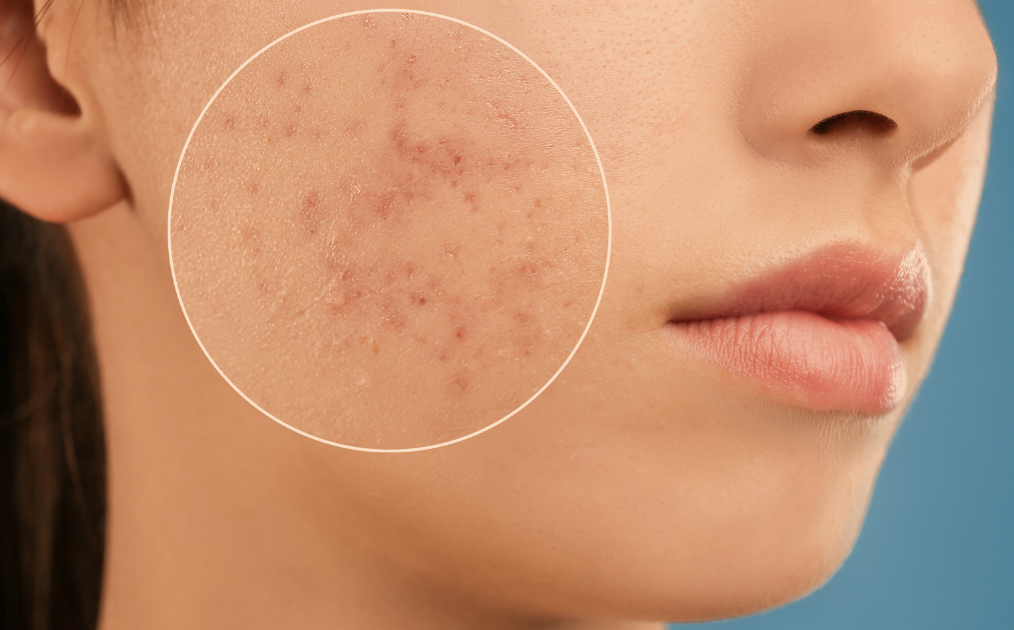
Reduces inflammation
Furthermore, benzoyl peroxide has anti-inflammatory properties. This is attributed to its ability to reduce the production of inflammatory mediators, such as prostaglandins and leukotrienes. The oxygen produced upon application of benzoyl peroxide disrupts the enzymatic processes involved in their synthesis.
By targeting both bacteria and inflammation, this ingredient plays a crucial role in treating acne lesions and preventing their recurrence.

Sensitivity Warning from Benzoyl Peroxide
Be aware that benzoyl peroxide can be irritating to the skin, especially for those with sensitive or dry skin types. Common side effects may include redness, dryness, peeling, and stinging sensations. Personally, my skin cannot tolerate traditional benzoyl peroxide products. Additionally, benzoyl peroxide may increase skin sensitivity to sunlight, leading to a higher risk of sunburn.
Always start with lower concentrations of benzoyl peroxide and gradually increase as tolerated if desired. If irritation occurs, discontinue use and consult a dermatologist for further guidance.

Micronised benzoyl peroxide (for sensitive skin)
Micronised benzoyl peroxide presents a great alternative solution for individuals with sensitive skin prone to acne breakouts. Unlike traditional benzoyl peroxide formulations, which may penetrate superficially due to their larger particle sizes, micronised benzoyl peroxide features smaller particle sizes that allow for deeper penetration. This deeper penetration enables micronised benzoyl peroxide to effectively target acne-causing bacteria whilst being less likely to cause significant surface irritation. This makes it an ideal choice for those with sensitive skin.
At concentrations typically ranging from 2.5% to 5%, micronised benzoyl peroxide exerts its antibacterial effects by releasing oxygen within the follicles, thereby combating acne breakouts associated with oily, acne-prone skin.
The Glytone Acne BPO Treatment Gel with 5% Micronised Benzoyl Peroxide is a mattifying gel that is fragrance-free and non-comedogenic. Users applaud this treatment gel for clearing their acne quickly, though advise to use a small amount and follow up with a moisturiser, as the product can be drying.
Azelaic Acid
What is azelaic acid?
Azelaic acid is a dicarboxylic acid often used as a topical treatment for mild to moderate acne. The effectiveness of azelaic acid lies in its multifaceted approach that targets various aspects of acne. This includes both antibacterial and anti-inflammatory properties whilst addressing post-inflammation hyperpigmentation.
Benefits of Azelaic Acid
Bacteria-killing & anti-inflammatory

Azelaic acid inhibits the growth of P. acnes by interfering with its protein synthesis and DNA replication. It also inhibits the activity of enzymes involved in the inflammatory process. Hence, it interferes with the conversion of arachidonic acid into inflammatory mediators like leukotrienes and prostaglandins.
However, while research suggests that azelaic acid may be less effective than benzoyl peroxide, it has shown comparable efficacy to tretinoin in clearing acne.
Antioxidant rich: kills free radicals
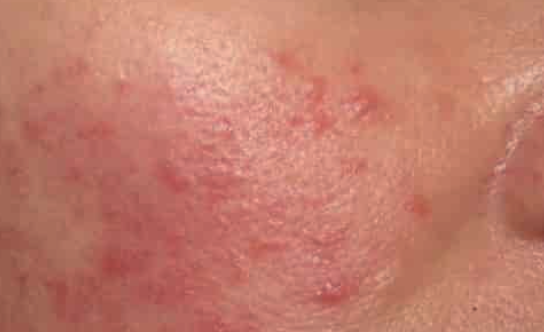
Azelaic acid also acts as an antioxidant, scavenging free radicals within the skin and preventing oxidative stress.
This dual-action not only helps in reducing existing acne but also prevents new lesions from forming and creates beneficial conditions for rosacea too.
Fade dark spots
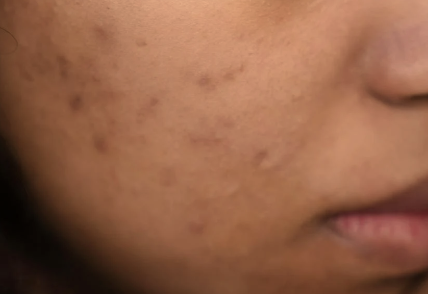
Additionally, azelaic acid is known for its ability to fade hyperpigmentation and dark spots left behind by acne. This is due to its inhibition of tyrosinase activity in melanin production. As a result, over time, the concentration of melanin in the dark spots gradually decreases, causing them to fade and become less noticeable. Therefore, azelaic acid addresses not only active breakouts, but also the aftermath of acne in the form of redness and pigmentation.
Sulfur
Sulfur, a naturally-occurring element, boasts a rich history dating back centuries for its medicinal properties. This ingredient has a drying effect on acne lesions, which also helps to absorb excess oil on the skin and reduce surface shine. Though it is much more gentle than benzoyl peroxide. It is worth noting that sulfur is generally considered to have milder exfoliating effects and sebum-regulating activity compared to BHAs and AHAs. Therefore, sulfur is often favoured for those with sensitive skin.
Kate Somerville EradiKate Daily Foaming Cleanser Acne Treatment
Antimicrobial Properties
- Sulfur exhibits potent antimicrobial effects against acne-causing bacteria, particularly Propionibacterium acnes (P. acnes). When sulfur comes into contact with the skin, it produces hydrogen sulfide and other sulfur compounds.
- These sulfur compounds create an acidic environment on the skin’s surface, which is inhospitable to the growth of bacteria. Additionally, sulfur compounds can penetrate the bacterial cell membrane, disrupting essential cellular functions and ultimately leading to bacterial death.
- By reducing the population of P. acnes on the skin’s surface, sulfur helps to alleviate inflammation and prevent formation of acne lesions.
Sebum-Regulating Properties
- Sulfur influences sebum production by inhibiting the activity of key enzymes involved in sebum synthesis, such as 5α-reductase. This enzyme is responsible for converting testosterone to dihydrotestosterone (DHT) within sebaceous glands. DHT is a potent stimulator of sebum production.
- By inhibiting 5α-reductase, sulfur helps to reduce the production of DHT and subsequently decreases sebum production to reduce clogged pores.
Exfoliating Properties
- Sulfur possesses mild keratolytic properties, meaning it can help to break down and remove dead skin cells from the skin’s surface.
- When applied topically, sulfur interacts with keratin proteins in the stratum corneum (the outermost layer of the epidermis), causing them to become softer and more easily sloughed off.
- By promoting the shedding of dead skin cells, sulfur helps to prevent the buildup of debris within pores, which can lead to acne formation.

Alongside use of a product containing sulfur, follow up with a soothing agent like niacinamide, a form of vitamin B5, to counteract dryness.

Section IV: Best Ingredients for Oily Acne Prone Skin – Antioxidants
Incorporating ingredients that address fine lines, dark spots, and offer protection against free radicals is ideal in a skincare regimen for oily, acne-prone skin. This skin type is not immune to the aging effects of environmental factors and free radicals. Fine lines and dark spots can result from sun exposure and inflammation, common in acne-prone skin.
Ingredients like antioxidants and vitamin C provide protection against free radicals and stimulate collagen production. This can aid in the prevention of fine lines and reducing the appearance of dark spots. Thus, this holistic approach helps oily, acne-prone skin maintain its youthful appearance while managing acne-related issues, achieving a balanced and vibrant complexion.
Consider the following ingredients that address fine lines, dark spots, and protect against free radicals.
Vitamin C
Vitamin C in skincare is to act as an antioxidant, collagen booster, and skin brightener. It can be beneficial for oily, acne-prone skin in the following ways.

Antioxidant Properties
Vitamin C is a powerful antioxidant that protects the skin from oxidative stress caused by environmental aggressors such as UV radiation and pollution. It scavenges free radicals and neutralises reactive oxygen species (ROS) that can damage lipids, proteins, and DNA in skin cells. This helps to protect lipids in the skin’s lipid barrier to maintain its integrity and support skin hydration. Its effects of preventing oxidative stress are ideal for oily, acne prone skin types to avoid acne formation and exacerbation.
Collagen Production
Vitamin C plays a key role in collagen synthesis by acting as a cofactor for enzymes involved in collagen synthesis.
Collagen is essential for maintaining the skin’s structure and elasticity. We lose 1% of our skin’s collagen each year as we age. By promoting collagen production, vitamin C can help to improve the overall health and appearance of the skin.
Brightening Effects
Vitamin C has skin-brightening properties, helping to even out skin tone and reduce the appearance of hyperpigmentation and acne scars.
This occurs through the disruption of melanin formation. Vitamin C inhibits the activity of tyrosinase, an enzyme crucial in melanin synthesis. This aids in a more radiant complexion, even skin tone and improved overall skin texture.
When choosing a vitamin C product for oily, acne-prone skin, look for lightweight, non-comedogenic formulations that won’t clog pores or exacerbate acne. Concentrations in skincare products typically range from 10% to 20%+. If interested, start with lower concentrations, and remember to patch-test.

Vitamin C esters
Vitamin C ideal for sensitive skin
Individuals with sensitive skin should beware, as Vitamin C can cause irritation. Dermatologists I have consulted warn that up to 50% of people may find it too harsh. Vitamin C comes in various forms; L-ascorbic acid is pure but highly unstable, often irritating to sensitive skin due to its low pH of 3.5.
Meanwhile, Vitamin C esters are more stable derivatives of the unstable form, L-ascorbic acid. They have been chemically modified to offer gentler yet effective alternatives for sensitive skin. However, they differ in concentration, solubility, how deeply they can penetrate the lipids in the skin, and time taken to see results.
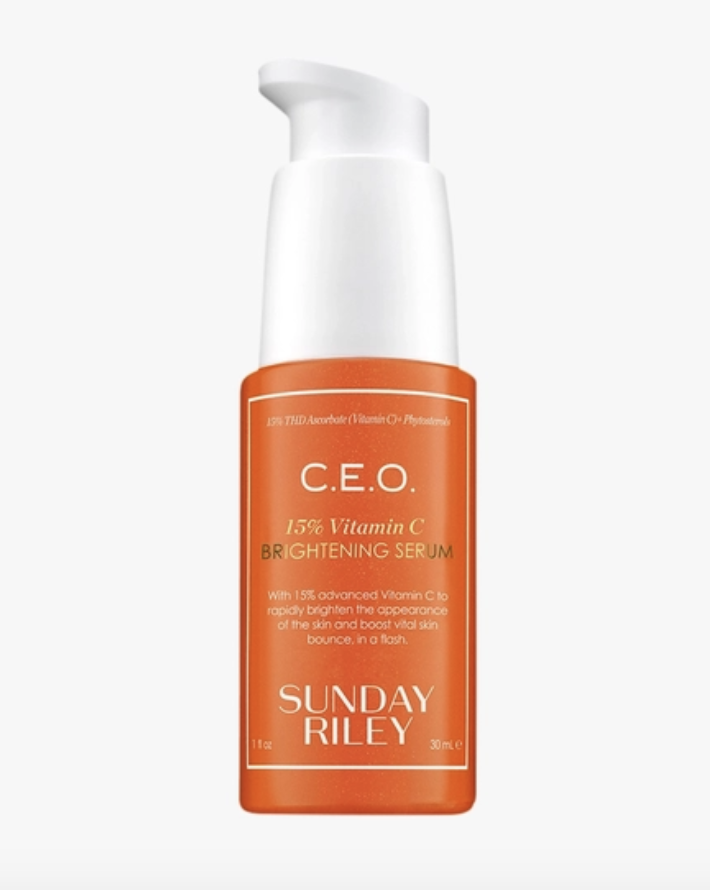
Sunday Riley C.E.O. 15% Vitamin C Brightening Serum
The Sunday Riley C.E.O. 15% Vitamin C Brightening Serum is a gentle yet effective option for sensitive skin prone to irritation.
It contains the potent brightening power of Tetrahexyldecyl Ascorbate (THD Ascorbate), a lipid-soluble vitamin C ester known for penetrating deeply into the pores. The serum is also formulated with hydrating glycerin and phytosterols.
Zinc Oxide
Zinc oxide is a versatile mineral compound. It possesses powerful antioxidant properties that chemically shield oily, acne-prone skin from UV radiation and oxidative stress.
Zinc oxide forms a physical barrier on the skin’s surface. Its unique chemical structure reflects, scatters, and absorbs both UVA and UVB rays, thus providing broad-spectrum sun protection. Zinc oxide also acts as a protective shield against environmental pollutants and free radicals that can exacerbate acne.
Zinc Oxide Sunscreen for Oily, Acne Prone Skin
Look for zinc oxide in sunscreen formulations. Specifically search for labels like “non-comedogenic” or “oil-free”. These are less likely to clog pores and contribute to breakouts, ensuring effective sun protection without compromising skin health.
Using sunscreen daily is crucial to protect the skin from UV radiation, which can lead to premature aging, sunburn, and an increased risk of skin cancer. This practice is especially important for those with oily, acne-prone skin. Wearing SPF daily helps prevent UV-induced inflammation and hyperpigmentation. This also minimises the risk of worsening acne scars and blemishes.
La Roche-Posay Anthelios Mineral Ultra-Light Face Sunscreen SPF 50
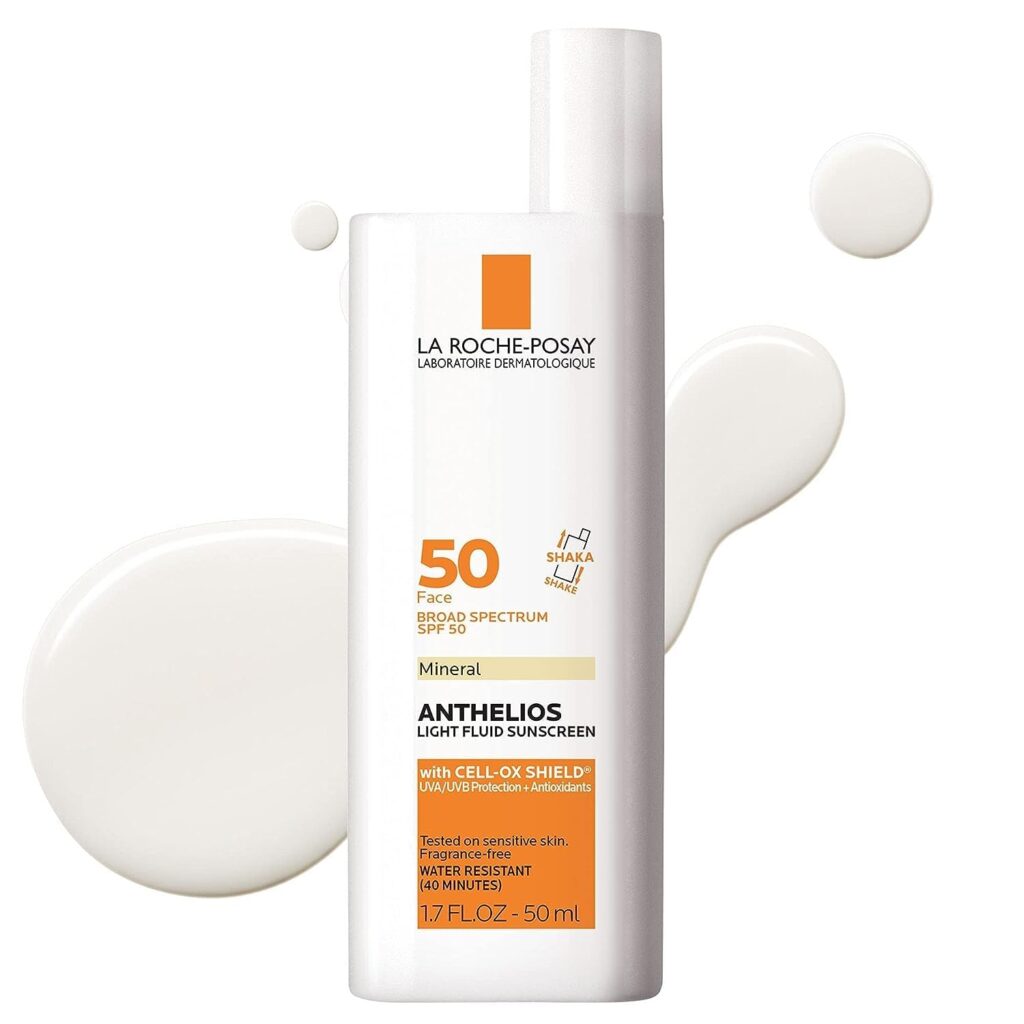

Section V: Best Ingredients for Oily Acne Prone Skin – Hydrating & Soothing
Cultivate a skincare regimen that addresses the delicate balance between ingredients that target acne and hydrate. Understand that acne-fighting ingredients like benzoyl peroxide can disrupt the skin’s natural moisture levels, compromising its lipid barrier. This disruption triggers a compensatory increase in sebum production, potentially worsening acne.
Hydrating ingredients restore the skin’s moisture equilibrium. This helps prevent excessive sebum production, and soothes irritation caused by acne treatments.
Thus, the synergy between these two groups of ingredients is essential for skin health. Combat acne effectively whilst preserving the skin’s hydration and barrier integrity for a more balanced, clear complexion.
Humectants for Hydration
Why Humectants are Ideal for Oily, Acne-Prone Skin
Humectants are a class of moisturising agents that attract water molecules from the environment (when atmospheric humidity is > 80%) or from deeper, middle layers of the skin. Their key function is to help to hydrate the skin’s upper layers.
Humectants are ideal for oily, acne prone skin because they focus on increasing the water content of the skin without adding excess oil or contributing to excess sebum production. Therefore, humectants provide a lightweight and non-comedogenic form of hydration, promoting a balanced and healthy complexion.
Consider the following humectants as some of the best ingredients for oily, acne-prone skin in terms of hydration.
Glycerin
Glycerin is a widely used humectant in skincare formulations due to its ability to attract and retain moisture in the skin. Its lightweight texture and non-greasy, noncomedogenic properties make it an ideal choice for oily, acne-prone skin.
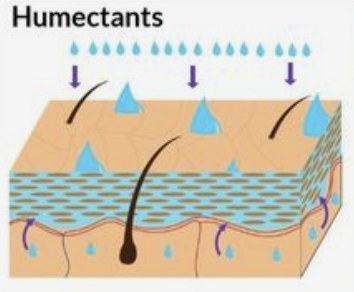
Glycerin helps to replenish moisture in the skin’s upper layers. It improves hydration levels without clogging pores or adding oil that can contribute to breakouts. Glycerin achieves this by forming hydrogen bonds with water molecules, allowing it to draw moisture from the surrounding environment. Once attracted to glycerin, water molecules are absorbed into the stratum corneum, increasing the skin’s hydration levels.
Glycerin also enhances the skin’s barrier function by improving the organisation of lipid bilayers within the stratum corneum. This also helps to prevent moisture loss and maintain hydration. Additionally, its humectant properties make it effective in soothing and calming irritated or inflamed acne-prone skin.
Ceramides
Ceramides are highly beneficial for oily, acne-prone skin despite being emollients (not humectants). They play a crucial role in maintaining the skin’s barrier function. Ceramides organise and stabilise the lipid bilayers in the stratum corneum. This helps prevent trans-epidermal water loss (TEWL) and protects the skin from external irritants, which can exacerbate acne.
Unlike some other emollients, ceramides are non-comedogenic and do not clog pores, making them suitable for acne-prone skin. By strengthening the skin barrier, ceramides also help regulate sebum production and reduce inflammation, leading to a more balanced and resilient complexion.
I highly recommend the Summer Fridays Cloud Dew Oil-Free Gel Cream for oily, acne-prone skin. It’s formulated with three forms of hyaluronic acid and ceramides, which hydrate and plump the skin without clogging pores. After using it, I noticed my skin felt plump and refreshed the next morning, thanks to its lightweight, non-greasy formula that keeps skin hydrated without becoming oily or dry.
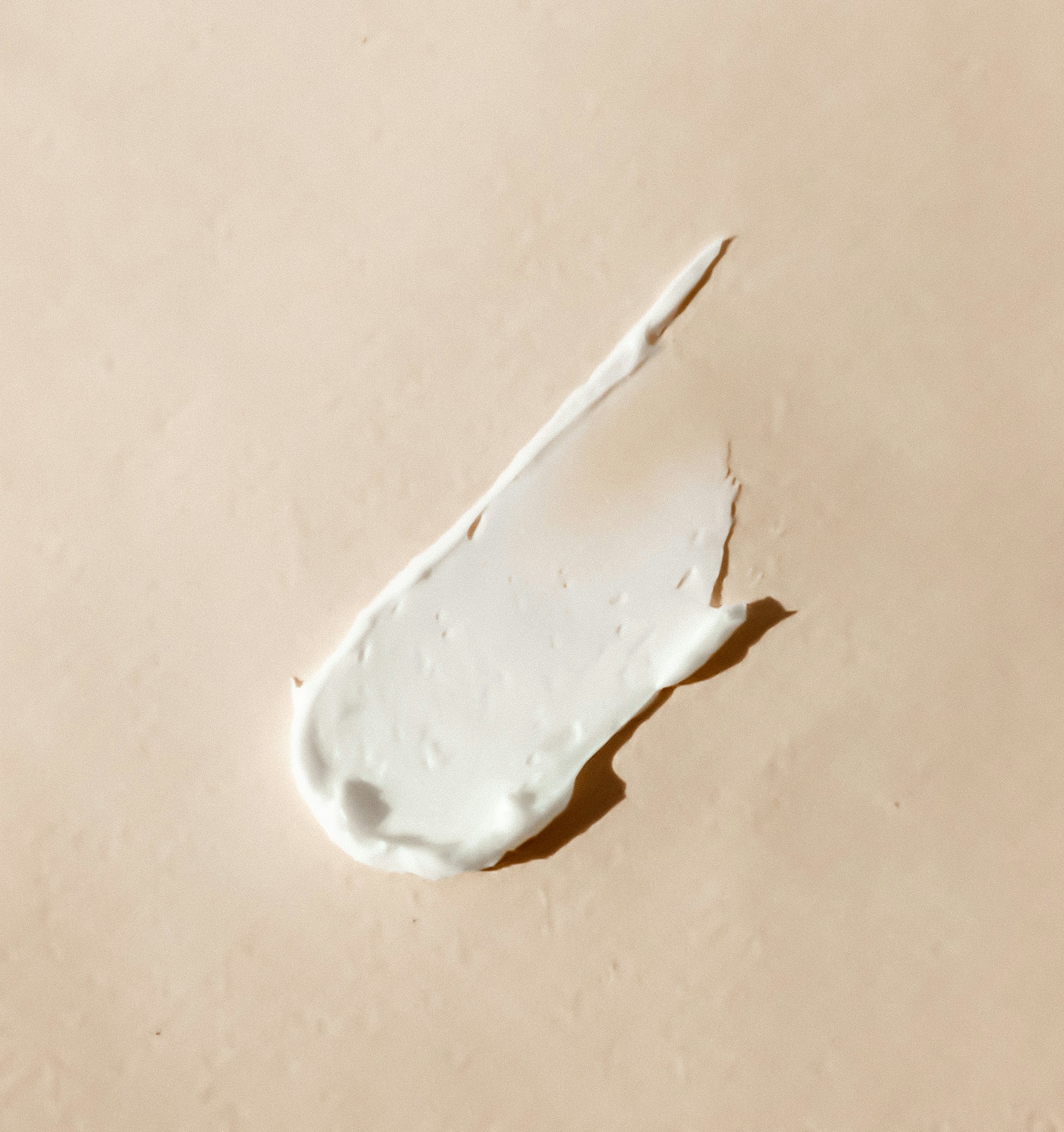
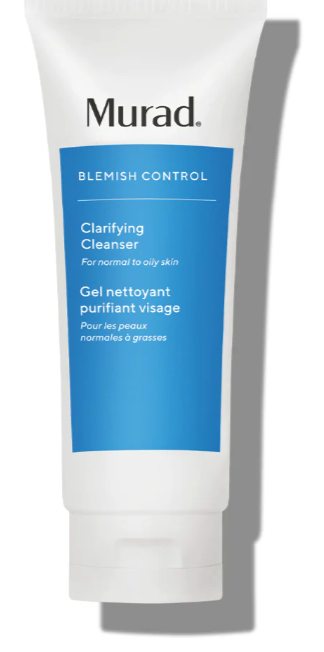
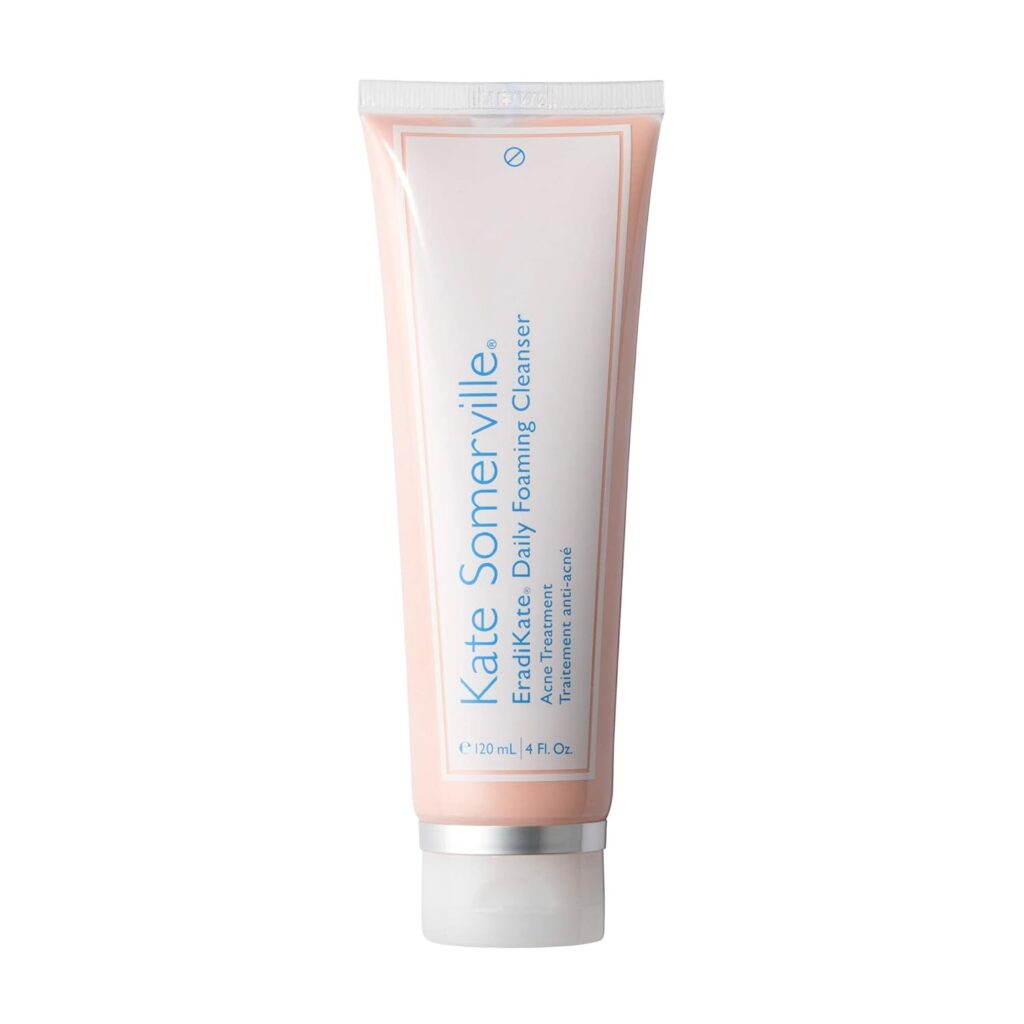
Leave A Comment